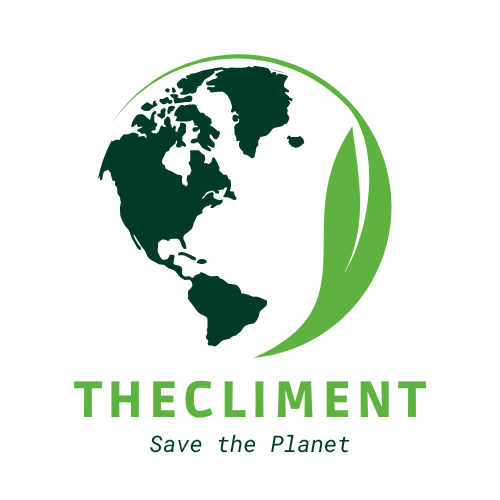
Introduction to Integrated Pest Management
Integrated pest management (IPM) is an essential and long-term crop protection method to prevent and combat pest invasions on agricultural lands.
Pests attack plants from everywhere, nematodes and rodents destroy roots in the earth, caterpillars and snails spoil leaves and berries coming from the ground, and birds eat up seeds and fruits attacking from the air. The list will not be completed without viruses, fungi, bacteria, etc.
Principally, the term pests relate to insects, but it also refers to any other organisms that damage crops, including animals, birds, pathogens, and weeds that cause plant diseases.
Depending on the target, pesticides are categorized into herbicides, insecticides, rodenticides, animal repellents, nematicides, avicides, larvicides, fungicides, bactericides, antimicrobial substances, etc.
Objectives
In the past, pest management mostly depended on synthetic pesticides. However, chemicals harm people and nature, as well as develop confrontation in target organisms. The goal of integrated pest management is to lessen this harm and control acceptable invasion levels rather than destroy all undesired populations. This is why it is important to understand what actions are justified in each case and use destructive ones only when other integrated management techniques don’t work.
Benefits
Integrated management alleviates the negative impacts of a non-IPM approach, and the main benefits of IPM include the following:
- Reduction of worker’s exposure to chemicals.
- Use of natural pest management methods with the least harm to the environment.
- Minimize water and air pollution.
- Elimination of land contamination, which increases soil fertility.
- Prevention of chemical resistance.
On a broader scope, integrated pest management advantages include the promotion of sustainable agriculture and nature protection in the long run.
Hortidaily published an article on benefits of Integrated Pest Management on January 9, 2024. you can access the article from https://www.hortidaily.com/article/9588806/what-are-the-main-benefits-of-ipm/
How Does it Work?
IPM demands separate solutions in each case, the concept of an integrated pest management program characteristically covers the following features:
- Problem assessment: The way to start an IPM program is by deciding if the pest is dangerous to crops. A correct understanding of the invasion scope determines whether or not the problem should be addressed.
- Pest monitoring and identification: These are the next components of an IPM program because it is important to understand if the organisms make potential risks and decide on the IPM choices or the use of specific pesticides.
- Preventive measures: These aim to reduce infestations by the application different agronomical techniques. Prevention in IPM may include planting pest-resistant species, crop rotation, or pre-treated seeds.
- Application of the most suitable integrated pest management methods: If prevention was unsuccessful. Integrated management options in an IPM program start with safer to more destructive ones. Such as, target or broadcast chemical spraying may track manual removal or trapping that hasn’t helped.

The aforementioned IPM characteristics help us understand how to plan and implement an IPM program step by step:
- Monitoring of crops regularly.
- Take preventive measures.
- Timely identification of pests and measure the risks.
- Decide on the requirement of actions and how IPM will work.
- Consider and apply all suitable integrated pest management options.
- Analysis of the results.
Methods of Integrated Pest Management
The actual idea of IPM is to use all the available integrated pest management techniques in multifaceted and use strong treatment only when the preceding options don’t work. Advanced integrated pest management widely engages innovative solutions. There are several IPM methods such as;
- Cultural Integrated Pest Management
- Mechanical / Physical Integrated Pest Management
- Biological Control in Integrated Pest Management
- Chemical Integrated Pest Management
Cultural IPM

Cultural control in integrated pest management decreases invasions through suitable agronomical practices. These methods are more effective when crops are healthy. Among others, cultural IPM methods consist of the following field management techniques:
- Treatment of soil
- Suitable plant selection.
- crop rotation.
- Strip cropping or interplanting.
- special planting times.
- Weed control.
- Use of trap plants.
Soil Treatment
Satisfactory conditions of soil speed up the growth of plants, and vital crops are more resistant to outbreaks. In integrated pest management, soil testing supports understanding if the soil is suitable for the production of what type of crop, and then applying the lacking nutrients to safeguard plant healthy growth.
Adding organic matter and insulation encourages soil organism’s activity and increases nutrient release. No-till practices help avoid soil erosion, contributing to sustainable farming. However, when tilling is necessary, it is suggested to conduct it in the winter to expose them to natural enemies and harsh weather.
Suitable Plant Selection
Healthy seeds and seedlings predetermine successful crop development, so it is significant to choose pest-free planting material with strong roots. Visual inspection, certified seeds, and pre-sowing of seed treatment help circumvent the problem in the future. As part of an integrated pest management program, planting resistant or tolerant cultivated varieties helps farmers to reduce yield losses.
Crop Rotation
Non-host crop orders are not suitable for specific pest species. Such as, rodents decrease grain yields, while birds and snails harm berries. If the environment is not suitable and there are no required crops, pests will leave for places where plenty of food is available. Thus, amongst other applications, crop rotation can be successfully used as an integrated pest management method.
Interplanting Or Strip Cropping
If rows of different crop types separate their host plants in-strip cropping or intercropping, Pests spread slower, which is also used in the integrated pest management system. On the other hand, outbreaks increase when plants of the same crop family or type grow together. Thus, mustard pests may move to cabbage, broccoli, and other brassicas, while potato beetles can harm growing potatoes, as well as tomatoes.
Choice Of Planting times
In integrated pest management, satisfactory time for sowing or planting make the crops the minimum subjected to pests or already strong enough to resist infestations. For example, it is better to sow squash early provided the temperature of soil is warm enough so that it can developed before pickleworm migrate back from the southern areas. At the same time, too early plantings may result in root decays due to extreme soil moisture after winter.
Weed Management
Weeds do not only decrease crops access to nutrients but hinder their healthy development making them vulnerable to pestilences. Additionally, undesired vegetation may carry pests. This is why weed control methods of integrated pest management play an important role in the integrated approach.
However, flowering weeds can attract pollinators and other beneficial insects, so cutting them just after blooming but before seed formation will increase crop yields and prevent new generations of weeds.
Use of Trap Plants
Planting trap plants in patches is another choice for IPM inter-cropping. This integrated pest management method proposes attracting pests to specific plants and then controlling them with mechanical or chemical techniques. In particular, soybeans can grow as trap crops for Japanese beetles.
Physical/ Mechanical IPM

Integrated mechanical and physical controls suggest either killing or removing pests with selected devices or manually blocking their accessibility to plants. Using traps or heating/ streaming soils belongs to the mechanical IPM control. Barriers are characteristic examples of physical IPM methods, such as;
Handpicking
Removing or picking pests out manually is a labor and time-consuming choice that is widely applied in integrated management and organic farming in which mature insects, their eggs, and larvae are collected by hand and destroyed.
Traps
Trapping is a common mechanical integrated pest management technique to isolate harmful organisms. Different types of electric or mechanical traps attract pests with light or fire, collect them by air suction, or repel them with sound or electricity.
Barriers
Building screens for birds and insects or constructing fences around fields to protect them from wildlife can bring productive results but at times they are not appropriate. For example, even the highest fence built in Australia would not stop kangaroos who are skilled enough to jump three meters high. The case will demand another integrated management solution as barriers will be of no use there.
Pruning and Raking
In integrated pest management practices, cutting infected plant parts can be effective when the damage is permanent or crop disease has no treatment. Raking helps manage invasions mechanically or move them to the earth’s surface to be destroyed by predators e.g., birds.
Irrigation Management
Appropriate irrigation management helps plant needs for healthy development and helps control pests. For example, pesticides in integrated management solutions can be managed through foliar sprinkling and spraying, or drip irrigation. However, the impact of irrigation management on IPM has both negative and positive sides.
Flood irrigation reduces the number of ground squirrels or gopher tortoises, yet extreme soil moisture is beneficial for nematodes, and continuous waterlogging encourages fungi-caused root rots.
Heat/Steam Treatment
Heating or steaming soils is an effective integrated management technique to overthrow pests, their eggs and larvae, weed seeds, and pathogens at high temperatures. Steaming and heating also disinfect organic matter, composts, or agronomic tools. This choice in mechanically integrated pest management occurs through burning fuels to produce water steam for the treatment of soil. Soil heating can be performed through sterilization (212°F) or pasteurization (160-182°F) for half an hour.
Soil solarization is an operative technique to disinfect the field by heating it naturally.
Biological Control in IPM

This integrated pest management technique suggests a common way of destroying pests by parasitoids, predators, pathogens, and other biological control agents (also called antagonistic organisms). The role of biological control in IPM is to originate a minimum imbalance in ecosystems by mimicking nature. Biocontrol in integrated management is analogous to natural processes, yet natural control occurs without human interference.
Use of Predators
Predators eat up their organisms that damages crops, for example, ladybugs diminish aphid numbers. Predator’s populations for integrated management are increased in their primary habitat or imported from other regions. However, when increasing predator numbers in integrated pest management, there are several features to consider:
- Foreign predators may not survive with the task.
- Reduction of several species may give rise to secondary pest attacks.
- Introduced predators become pests themselves with time if there are no natural opponents to control their population in the new environment.
A well-known example of a food chain fault in integrated pest management is the import of rabbits to Australia. With time, their population turned out to be a real irritation to farmers together with indigenous dingoes or kangaroos
Use of Parasitoids
These can develop on or within their hosts to ultimately kill them after maturing. Distinctive examples of parasitoids are most flies and wasps. Put on this integrated pest management technique, it is important to recollect that parasitoids are also subject to hyperparasitoid attacks.
Use Of Pathogens
Pathogenic microorganisms are bacteria, viruses, and fungi that infect pests and cause diseases dropping their numbers, which are also used in the integrated pest management system. For example, wild rabbit numbers meaningfully decreased after infections with myxomatosis a mosquito-borne virus. In the areas with a lack of mosquitoes, the idea was applied with a flea-borne virus.
Chemical IPM

This type of integrated pest management approach applies natural or synthetic chemical substances to repel or eliminate pests. Biopesticides are natural repellents comprised of plant extracts or oils, which is the safest option for animals, humans, and crops. https://thecliment.com/organic-farming-key-methods/
 The Climent Respect your roots, Protect your planet
The Climent Respect your roots, Protect your planet
